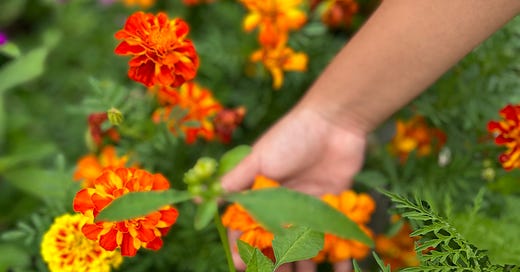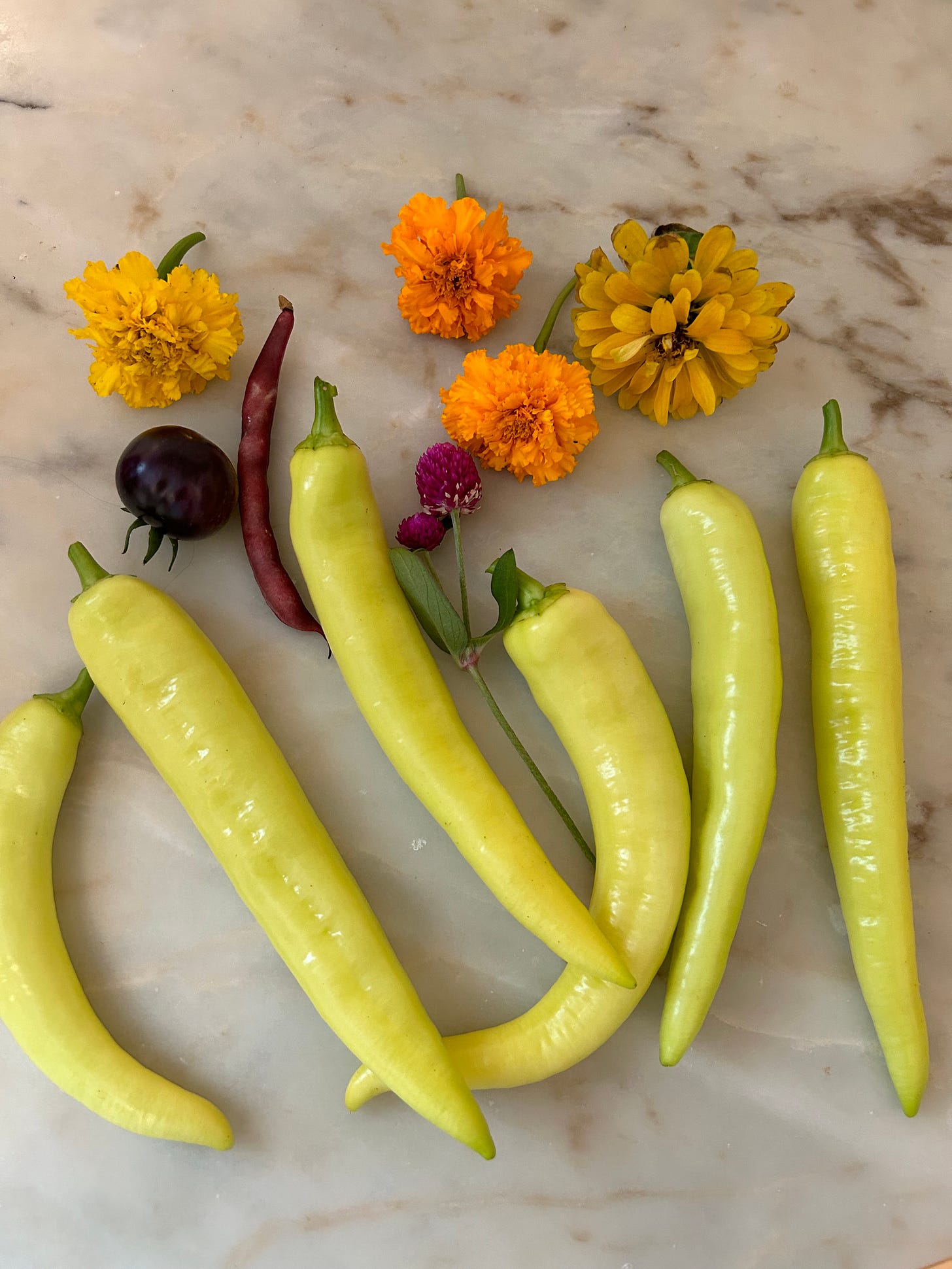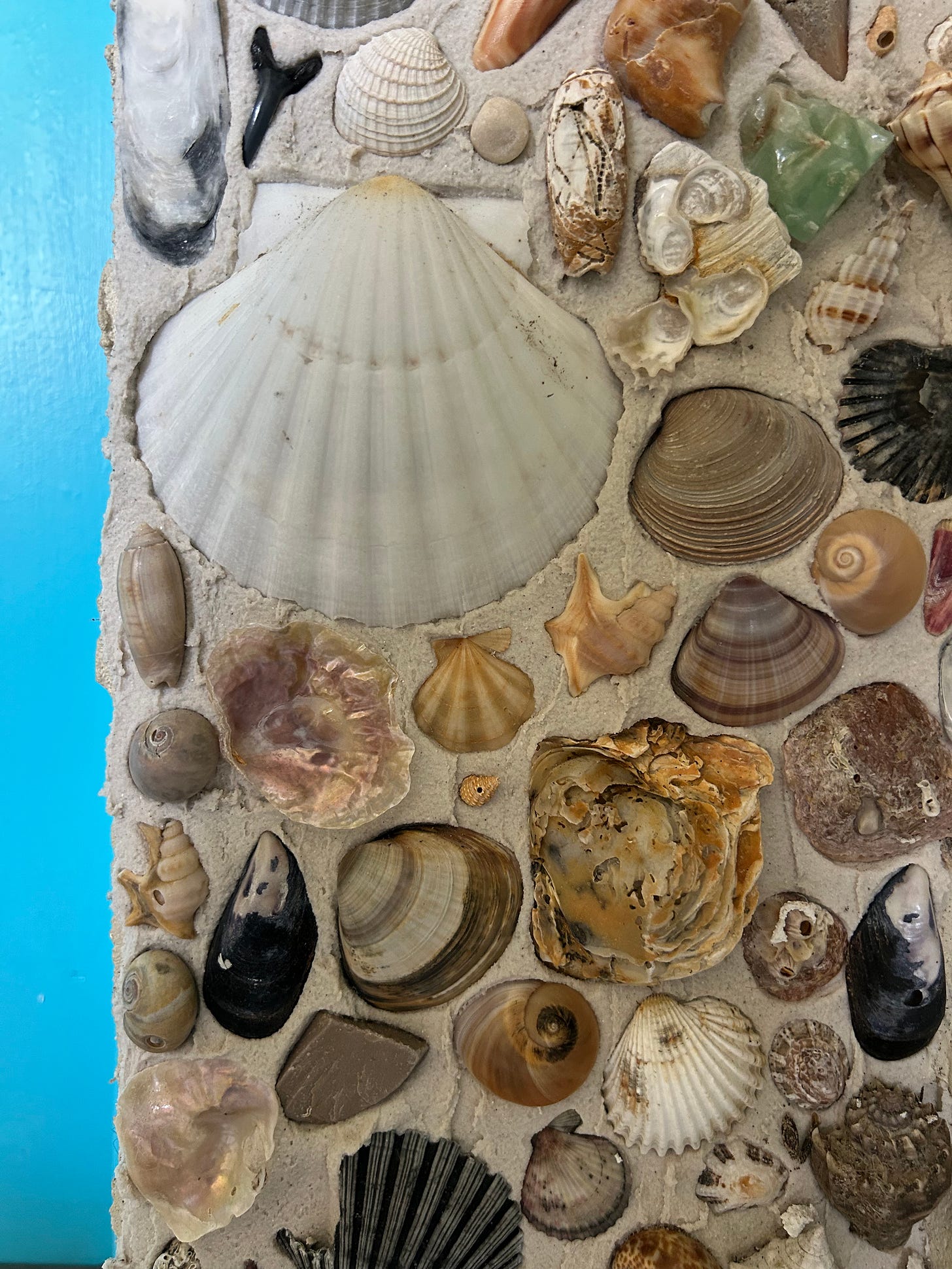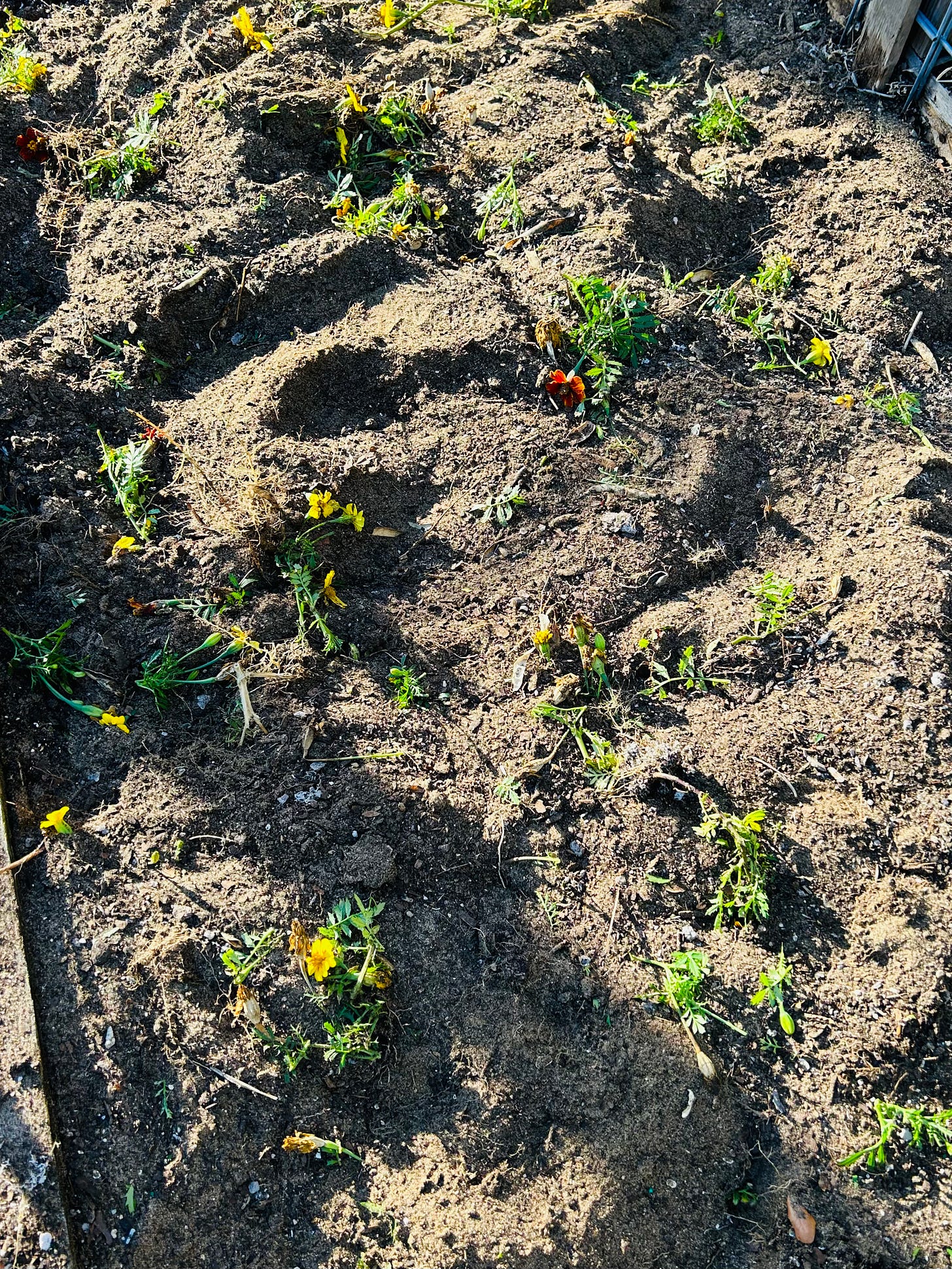Marigolds have unique properties. This is why, I believe, they have been used by artists, natural-dye artisans, farmers, and scientists alike. I’ve been conceptualizing a text for a while that in my head I called Marigold Magic. I’m hesitant to use the word ‘magic’ at all because the lore around them is truly based in science, and history. Marigolds are also edible and are used by chefs. People tell me I have beautiful Marigolds. However, I have utilized them in various ways not so much for any visual effect but to nurture the soil. Marigolds have a kind of lore to themselves based in storytelling, art, and even in family histories. In fact, my grandfather grew them and harvested their seeds.
I know my native gardening colleagues, who I rely on for so much for my own native wildflower areas on my property may disagree with my thoughts on Marigolds. Marigolds are not native to this barrier island. I love these flowers so much that I have been planning a marigold tattoo for a while. As I began to explore homesteading techniques in Florida, I have relied heavily on my Marigolds.
When I was a student at University of California at Berkeley, I grew an unusual striped marigold in my yard. Around that time my professor shared a story with me about an artist named, Emma Kunz, who was an artist and a healer. Her work was interesting for me to consider at the time. It had a modernist linear quality but differed completely from in feeling, mood, and tone. She had a work called ‘Polarized Marigold’, that I have since associated with a Calendula flower. The work resonated with me so deeply that I have since referred to it many times when I cultivate plants. I believe that growing botanical specimens and cultivating food is a kind of art form. In fact, the work of many homesteaders I’ve encountered are exploring art as well as farming. In my opinion, their gardens and crops cross over to a kind of land art in addition to being a food source.
A few years later I had a residency at SOMA in Mexico City, DF. While I was there, I went to visit Frida Kahlo’s home called the Blue House. Like the polarized flower from Emma Kunz, that house was a work of art that stuck with me. The house reminded me of the lifework of one of my favorite architects, Lina Bo Bardi. Like Bo Bardi, Kahlo also embedded material objects like shells directly into her garden wall. I have since made two shell walls of my own. The shells in Kahlo’s concrete garden wall continue to inspire me, as I explore this space between the ocean and land. Kahlo’s garden has been recreated many times, with marigold plantings. In Mexican culture, marigolds hold mythological resonance. Her garden has been recreated for botanical education in public gardens outside of Mexico several times.
My current property in Merritt Island, Florida, backs up to a body of water that is a mix of fresh and salt water. At times, I do consider the way artists like Kahlo brought the ocean into their homes. Land merges with water in the coastal ecosystem on a barrier island. Sometimes I call it a swamp, but I truly think it’s stunning. I think of this entire area as a kind of mixture of land and salt water. Whatever I grow in my yard is mindful of my family but also of osprey, gators, or even manatees that move through our space. My space is connected to and through the ocean in this brackish water. In a way it is a metaphor for spaces that are affected and changed by salt and water, and everything discarded or kept by the humans who have inhabited this place.
Growing food and a garden starts with your soil. Where I live, I joke that it’s all sand. We prefer to utilize all organic techniques in our yard to the greatest degree possible. To this end, I have experimented with compost and natural fertilizers. This led me to boil and create teas from eggshells and banana peels based on my friend’s advice. I let it sit for a day and then poured it around my plants. I approach some of the sandy soil from the perspective of growing nutrients and investing in the soil, rather than the plants. For this reason, I have scattered clover seeds to enrich nitrogen in the sandy soil and Marigold seeds to repel nematodes. Along with ants, sunscald, and fungal challenges- nematodes are an enormous problem in a place with poor, sometimes contaminated, sandy soil. A nursery once told me if you have nematodes in Florida, simply pour gravel down and grow your garden somewhere else. I did not realize when I started growing food in my own yard that Marigolds were as helpful as they would end up being beautiful. The plant itself germinates easily from seed and is extremely heat tolerant. This brings me to the idea that Marigold fields are possible in Florida. Please plant some!
In hindsight my success is in fact based in science. The plant naturally repels nematodes. I went a step farther with it, and actually spent a season growing Marigold seeds. Afterwards my husband and I even tilled them by hand directly into the soil. Opinions on this method vary as to the effectiveness, but it is an ancestral method that works for us on this island in Florida. Marigolds and all their qualities and lore continue to fascinate me.
Please enjoy these images, and I’d love to know if you have any of your own Marigold lore.
*This article mentions the work of Emma Kunz, whose Polarized Marigold continues to resonate with me.
*This article also mentions the house and garden of artist Frida Kahlo. Her house and garden inspire me daily.







